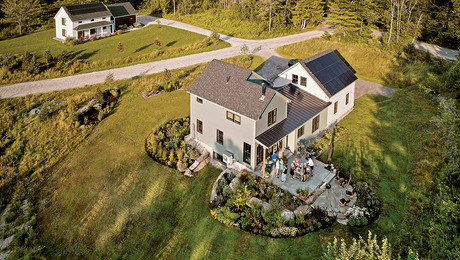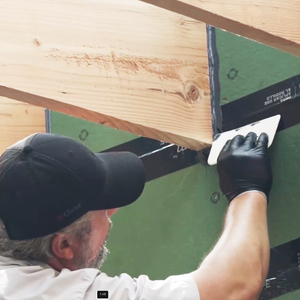Our daughter and her husband are seriously interested in a home in Ft. Collins Co. that has an elevated structural floor in the basement because of expansive soil. What can you tell us about this? In addition to the structural question we wonder about molds etc.
Thanks for your help.
susanB114
Edited 8/5/2002 12:50:51 PM ET by SUSANB114


















Replies
Expansive soils are clays that will expand and contract noticeably with groundwater and temperature variations. There is no mold issue to be concerend with. The elevated structural slab is a solution to the expansive soil which is can heave a standard slab on grade causing cracking, seepage, bowed walls (unless they are floated or suspended) and stuck doors. A good detail to find in home construction.
...that's not a mistake, it's rustic
Thank you Bungalow Jeff for your reply. What should the metal "stringers" (or whatever) that go between the caissons be made of? Will they rust or get weakened over time? It seems that damp clay could produce mold on the underside of particle board which is above it. (My husband and I are going to CO. to see this house at the time of the inspection. Our daughter and her husband have a contract on the house). Our son in law has asthma... so we want to be cautious. Is there a way to later add a different floor? What would you recommend (that could be part of a finished basement... or isn't that an option?)
Thanks.
SusanB114
If it's been well done without cracks in the structural floor, it's a good thing.
You also asked about molds. Generally, properly vented construction avoids molds and Ft Colllins is a dry climate.
Sounds like all you need is a good home inspector on site.Excellence is its own reward!
Edited 8/6/2002 8:15:28 AM ET by piffin
Thank you, Piffin, for your response. It seems that you think that the floor is a poured floor ("if done with no cracks") but my understanding is that the floor is particle boards on the "stringers" or whatever the metal carriers are on the side beams (that are on the caissons). What would it take to now put a poured floor or something that could be used if one wanted to finish the basement? If there is dampness that would cause the soil to expand wouldn't there be a possibility of molds? the underside of the particle board seems like a place that could grow mold.
What should the stringers be made of so that they don't weaken from moisture?
Thank you so much for sharing your expertise.
SusanB114
Good points and thoughts but I can't quite picture this. Sorry but that's why the recommendation for an inspector on site.
Now, their are dozens of newly 'graduated' building inspectors and some states have no controls or requirements for wearing that title so be sure to interview and find one familiar with this type construction and the questions you ask.Excellence is its own reward!
I agree with Piffin's advice for a qualified (key word) inspector. I assumed the same concrete slab as Piffin, so we are getting into details that cannot be accurately assessed over the internet....that's not a mistake, it's rustic
Susan
Expansive soils are a big problem here in Colorado along the front range.
Inspectors are critical but my additional advice is consult a USGS survey map which shows areas where there is significant concentration of Bentonite. We live in Littleton just down the road and had a heck of a time looking for a place where soils were not an issue. If the foundations and slabs look to be in good shape and the house in on the older side... chances are they built on a good patch of soil with minimal swelling potential.
I'd be very suspect of new homes and conduct an inquiry as to how they prepared the soil for building. (also consult the USGA map) I have seen houses that have been tortured and yet there stil seems to be people willing to buy despite the bad shape of the foundations and slabs.
Consult a local soils engineer (yellow pages) for good professional advice...well worth the piece of mind. Lastly keep the water away from the foundation . Good luck
Ralph
Thanks for your input. We are now out here in CO. (Ft. Collins) and are starting to feel more comfortable with this design that protects from expansive soils. A lot of study is being done.
Susan